Introduction
Borrowed or inspired from the Greek alphabet, ‘Greeks’ are a vital risk management tool for crypto options. These variables are used in the options market to describe the different dimensions of risk involved when taking an options position.
Each risk variable is a result of an imperfect assumption or relationship of an option with another underlying variable. Traders use different Greek values to label options risks and manage option portfolios.
Key Takeaways:
- Delta (Δ) measures the rate of change of an option’s price with respect to changes in its underlying asset’s price.
- Gamma (Γ) measures the rate of change of Delta with respect to changes in the underlying asset’s price.
- Theta (Θ) measures the change in the price of an option for a one-day decrease in its time to expiration.
- Vega (ν) measures sensitivity to volatility — how much the price of an option changes based on a 1% change in the volatility of its underlying asset.
- Rho (ρ) represents the rate of change between an option’s value and a 1% change in the interest rate (e.g., the rate of US Treasury bills).
What Are Greeks and How Do They Work With Crypto Options?

In short, the Greeks are derived from a mathematical equation called the Black-Scholes-Merton (BSM) model, which is widely used for pricing an option contract. Based on the model, the price of a call option is determined by the current underlying asset (e.g., a cryptocurrency) price (S), strike price (K), risk-free interest rate (r), and time to maturity (t). Keep in mind that the model has some assumptions and is built on an ‘ideal world’, so traders will need to adjust to real-time situations.
Greeks include Delta, Gamma, Theta, Vega, Rho, and other variables. Each of these variables has a number associated with it, and that number provides information to traders on how the option moves or the risks associated with it. The table below lists the main Greeks that traders tend to consider before opening an option position.
Delta
Delta (Δ) measures the rate of change of an option’s price with respect to changes in its underlying asset’s price. In other words, Delta represents how much an option price is expected to change based on a $1 change in the underlying asset. For example, a Delta of 0.50 means that the option’s price will theoretically move $0.50 for every $1 move in the price of the underlying asset.
Delta has the following characteristics:

Delta is often used when determining directional risk. When buying a call option, a trader will tend to keep an eye out for a positive Delta since the price will increase along with the underlying asset price. When buying a put option, a trader would, conversely, tend to want a negative Delta, where the price will increase if the underlying asset price decreases.
Deltas can also be thought of as the probability of the option expiring In-the-Money (ITM). Having a Delta-neutral portfolio can be a great way to mitigate directional risk from market moves. Based on the same example given above, a Delta of 0.50 means that the option has about a 50% chance of being ITM at expiration.
Three things to keep in mind with Delta:
- Tends to increase closer to expiration for near or At-the-Money (ATM) options.
- Is further evaluated by Gamma, which is a measure of Delta’s rate of change.
- Can also change in reaction to implied volatility changes.
Gamma
Gamma (Γ) measures the rate of change of Delta with respect to changes in the underlying asset’s price. That is to say, Gamma indicates the amount of change in an option’s Delta to the $1 change in the price of the underlying stock. Gamma is a number that ranges from 0 to 1.00.
Gamma is a helpful tool because the Delta value of an option can change over time. So when looking at two options with the same Delta, it is unknown which is more likely to stay at the same Delta. Gamma helps to determine how stable Delta is. For example, suppose that two options have the same Delta value of 0.5, but one option has a Gamma of 0.1 (meaning the Delta changes 0.1 per $1 movement of the underlying asset price), and the other has a Gamma of 0.3 (meaning the Delta changes 0.3 per $1 movement of the underlying asset price). The option with the higher Gamma (0.3) will have a higher risk since an unfavourable move in the underlying asset will lead to an oversized impact. High Gamma values mean that the option tends to experience volatile swings, which may not be preferred for most traders looking for predictable opportunities.
Gamma hedging tries to maintain a constant Delta by buying and selling options in such a way as to offset each other, resulting in a net-Gamma of around 0.
Theta
Theta (Θ) measures the change in the price of an option for a one-day decrease in its time to expiration. Theta tells traders how much the price of an option should decrease as the option nears expiration, known as ‘time decay’.
Time decay represents the erosion of an option’s value or price due to the passage of time. As time passes, the chance of an option’s profitability or ITM lessens. Time decay tends to accelerate as the expiration date of an option draws closer because there’s less time left to earn a profit from the trade.
Theta is always negative for a single option since time moves in the same direction. As soon as an option is purchased by a trader, the clock starts ticking, and the value of the option immediately begins to diminish.
Vega
While Vega (ν) is not a real Greek letter, it measures how much the price of an option changes based on a 1% change in the volatility of its underlying asset. Vega is an essential measurement because volatility is one of the more important factors affecting option values. A drop in Vega will typically cause both call and put options to lose value, while an increase in Vega will typically cause both call and put options to gain value.
All other factors being equal, from a strategic point of view, traders can consider buying options when Vega is below ‘normal’ levels and consider selling options when Vega is above ‘normal’ levels.
Rho
Rho (ρ) represents the rate of change between an option’s value and a 1% change in the interest rate (e.g., the rate of US Treasury bills).
As interest rates increase, the value of call options will generally increase, while put options will generally decrease. For these reasons, call options have positive Rho, and put options have negative Rho. For example, assume a call option has a Rho of 0.05 and a price of $1.25. If interest rates rise by 1%, the value of the call option would increase to $1.30, all else being equal.
Learn More About Crypto Options and Greeks
Refresh your option base knowledge with our intro to options article, or take a deeper dive into option trading and learn our top 10 strategies for trading options that suit every market participant’s personality and sentiment.
Due Diligence and Do Your Own Research
All examples listed in this article are for informational purposes only. You should not construe any such information or other material as legal, tax, investment, financial, or other advice. Nothing contained herein shall constitute a solicitation, recommendation, endorsement, or offer by Crypto.com to invest, buy, or sell any digital assets. Returns on the buying and selling of digital assets may be subject to tax, including capital gains tax and/or income tax, in your jurisdiction or the jurisdictions in which you are a resident for tax purposes. Any descriptions of Crypto.com products or features are merely for illustrative purposes and do not constitute an endorsement, invitation, or solicitation.
In addition, the Crypto.com Exchange and the products described herein are distinct from the Crypto.com Main App, and the availability of products and services on the Crypto.com Exchange is subject to jurisdictional limits. Before accessing the Crypto.com Exchange, please refer to the following links and ensure that you are not in any geo-restricted jurisdictions for Spot Trading and Margin Trading.
Past performance is not a guarantee or predictor of future performance. The value of digital assets can increase or decrease, and you could lose all or a substantial amount of your purchase price. When assessing a digital asset, it’s essential for you to do your own research and due diligence to make the best possible judgement, as any purchases shall be your sole responsibility.





